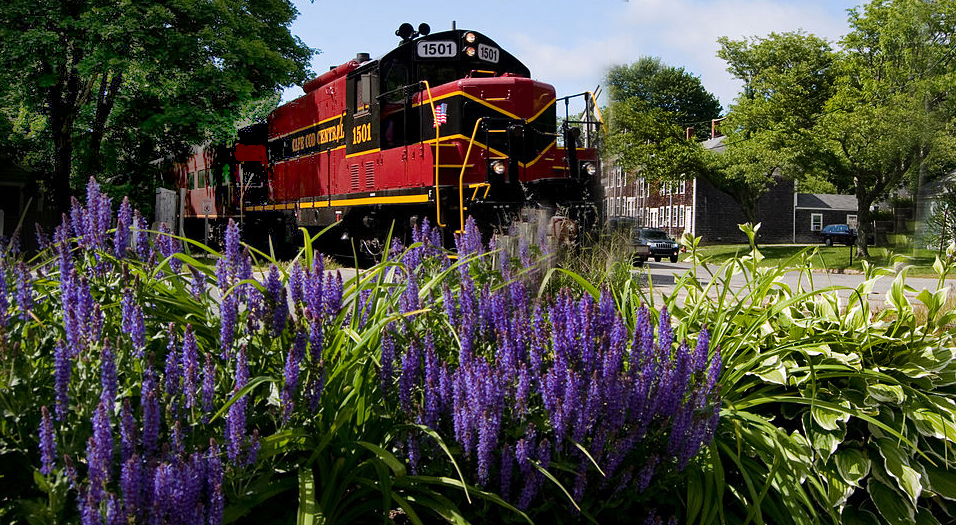March 2022 Newsletter

Spring is nearly upon us and it’s only been a couple of weeks since the delayed February Newsletter was published yet our club always has new items to share. That said, read on.
Club News
- Lionel Project Railroad - Logging Town USA – Lionel VP Bob Mallory adds further details on the group’s newest layout. “This layout is set in the late 1950's early 1960's, high in the mountains, inside a flat area within a heavily forested region. It will be a typical old logging town, rustic, small and compact. Within the mountain area, the hills form a large tunnel with the formation of a flat lake on top of the mountain feeding into the river. The river feeds the logging mill with a holding area for logs in the river against a dam. River continues through the forest with fishing and boating. A city is located adjacent to the railroad and serves as a vehicle for moving the cut lumber. The plexiglass covered opening on the mountain’s backside was designed to allow people a view of the train traveling through the tunnel. The tunnel will be lighted and include workers inside.”
- March Luncheon Schedule – Bryan Enarson reminds us this month’s luncheons will be held at Dede’s Restaurant on March 4th and March 18th. Be certain to RSVP Bryan at bryanlax@aol.com no later than March 2nd and March 16th if you’re planning to attend.
- HO Clubhouse Organization & Inventory – A sincere THANK YOU to Rich Wilson and Larry Schneider for the time they’re volunteering to count, categorize, and box HO scale equipment and supplies at the 100S clubhouse!
- CCMRRC Website Statistics – Unfortunately, GoDaddy held our website hostage for nearly two weeks early in February until Scott Jesienouski rectified the situation. Since Scott had recently paid GoDaddy's hosting fee, I’m not certain why the outage occurred. However, members might be interested in website traffic over the past 30 days. Click HERE for the data as of 02/25/2022.
Railfanning
- The folks at UtahRails.net recently published marvelous new D&RGW and UP photo collections detailing passenger cars and depots. 991 high resolution photographs from the Union Pacific Railroad Historical Collection were added, many featuring passenger cars being assembled at American Car & Foundry in St. Charles, MO. When was the last time you saw the underside of a three-axle passenger car truck?
https://donstrack.smugmug.com/UtahRails/Union-Pacific/UP-Passenger-Cars-UPRR-Photos
Links to the two D&RGW collections are shown below.
https://donstrack.smugmug.com/UtahRails/Vic-Oberhansley-Photos/Vic-Oberhansley-DRGW-Photos/
- 25 of the Best Train Museums
https://vacationidea.com/things-to-do-near-me/best-train-museums.html
- Stunning Photos of Abandoned Train Stations Around the World
- Building A Steam Locomotive: PRR T1 5550
https://www.youtube.com/watch?v=NSa1uLwVUVw
Modeling News
- Rod Stewart says giant model railway took 10 months to get to England
https://www.mirror.co.uk/3am/celebrity-news/sir-rod-stewart-says-giant-26303564
Member Layout Updates
It’s back to work on my railroad after several months
of delay, now concentrating on the Salt Lake City diesel service facility Union Pacific opened in 1955.
Making the window
openings in the 3/16” foamcore walls with a straight edge and hobby knife
proved quite inconsistent requiring a change in cutting strategy. Using a 14TPI ¼” blade in my 14” bandsaw,
consistently straight cuts were easily made.
Cuts were smoothed with an emery board.
Since the Evergreen styrene supply at our local hobby shop has
evaporated with no plans to restock the previous inventory, I used Adobe
Illustrator to create the interior and exterior “walls” (metal siding above cinderblock),
printed them with Adobe Acrobat at actual size on 20 lb. Domtar Imageprint
paper with an HP 4260 Inkjet printer. For
images larger than 8½ x 11, Acrobat printed as many pages as needed to maintain
the image’s actual size. The paper was attached
to the foamcore with Scotch Photo Mount acid free spray adhesive. To protect the images from any damage by accidental
moisture, a light coat of Krylon Crystal Clear Matte was applied to each wall
when completed.
A good
friend printed 3D window frames for the wall openings.
Using photos
from the Spring 1998 issue of Union Pacific Historical Society’s magazine The
Streamliner for reference, the building’s interior bracing was
created in Illustrator, printed, and used as templates for construction with
Evergreen 0.125” I-beam stock. Styrene
was cut with NWSL’s The Chopper.
Unfortunately,
my previous attempt to create the facility’s concrete floor with 0.020” styrene
strips did not allow sufficient flange clearance causing locomotives and
rolling stock to wander off the rails. After prying up the previous center strips,
new ones (0.020” x .550”) were cut and reattached to the ties using full
strength white glue. A concrete color
was applied to the floor and approach tracks using the same technique as the
roundhouse floor previously described in photo 28.
Again, using
photos from The Streamliner article from UPHS, HO scale 3D printed industrial machines
were purchased from Shapeways. (The
detail on these resin prints is absolutely exquisite and well worth the
expense.) Using various sizes of micro
brushes, Vallejo and Tamiya paint was being applied. Click HERE
and scroll down to number 50 for latest progress photos.
Until April, All
Aboard !!
Lloyd Thomson